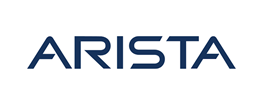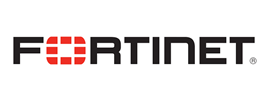- Course overview
- Course details
- Prerequisites
Course overview
About this course
This learning path guides you in securing Azure services and workloads using Microsoft Cloud Security Benchmark controls in Microsoft Defender for Cloud via the Azure portal.
Audience profile
The primary audience for this course are
- Administrator
- Security Engineer
- Azure
- Azure Key Vault
- Azure Log Analytics
- Azure Portal
- Azure Private Link
- Azure SQL Database
- SQL Server on Azure Virtual Machines
- Azure SQL Server on Virtual Machines
- Azure Storage
- Azure Virtual Machines
- Azure Virtual Network
- Microsoft Defender for Cloud
Course details
Module 1: Filter network traffic with a network security group using the Azure portal
- Understand the purpose and benefits of using Azure NSG to filter network traffic.
- Learn how to create and configure NSGs to enforce access controls for Azure resources.
- Gain insights into how NSGs can be used to allow or deny specific types of traffic based on source, destination, and port.
- Understand how to prioritize NSG rules and leverage Azure NSG flow logs for monitoring and troubleshooting.
- Recognize the role of NSGs in implementing network security best practices in Azure.
Module 2: Create a Log Analytics workspace for Microsoft Defender for Cloud
- Understand the importance of a centralized logging solution like Azure Log Analytics workspace for Microsoft Defender for Cloud.
- Learn how to create and configure a Log Analytics workspace in Azure.
- Gain insights into collecting and analyzing security data from Microsoft Defender for Cloud within the Log Analytics workspace.
- Understand how to create custom queries and alerts to proactively detect security threats and incidents.
- Recognize the benefits of integrating Log Analytics workspace with other Azure services and tools.
Module 3: Set up Microsoft Defender for Cloud
- Understand the features and benefits of Microsoft Defender for Cloud, Microsoft Security Benchmark, Security Recommendations, and Defender for Cloud Secure Score.
- Learn how to leverage these tools to monitor, protect, and improve the security of cloud environments.
- Explore the MITRE Attack Matrix to identify common attack techniques and prioritize security efforts.
- Understand the concept of Brute Force Attacks and the importance of implementing preventive measures.
- Familiarize yourself with Just in Time Virtual Machine to implement fine-grained access controls for enhanced security
Module 4: Configure and integrate a Log Analytics agent and workspace in Defender for Cloud
- Understand the importance of a centralized log collection and analysis solution in Microsoft Defender for Cloud.
- Learn how to configure and deploy the Log Analytics agent in Azure.
- Gain insights into creating and configuring a Log Analytics workspace for Defender for Cloud.
- Understand how to integrate the Log Analytics workspace with Defender for Cloud to collect and analyze security logs.
- Recognize the benefits of leveraging centralized log analytics for proactive security monitoring and threat detection.
Module 5: Configure Azure Key Vault networking settings
- Understand the importance of configuring networking settings for Azure Key Vault in ensuring secure access and communication.
- Learn how to configure network access control for Azure Key Vault using virtual network service endpoints and private endpoints.
- Gain insights into configuring firewall rules and virtual network service endpoints to restrict access to Key Vault.
- Understand the process of configuring private endpoints to securely access Key Vault from virtual networks.
- Recognize the benefits of properly configuring networking settings for Azure Key Vault in enhancing overall security.
Module 6: Connect an Azure SQL server using an Azure Private Endpoint using the Azure portal
- Understand the importance of using Azure Private Endpoint to establish secure connections to Azure SQL Server.
- Learn how to configure and create an Azure Private Endpoint for Azure SQL Server in the Azure portal.
- Gain insights into the network architecture and components involved in setting up an Azure Private Endpoint.
- Understand how to validate and test the connection between the Azure Private Endpoint and Azure SQL Server.
- Recognize the benefits of using Azure Private Endpoint for securing database connections and isolating network traffic.
Prerequisites
None
Enquiry
Course : SC-5002: Secure Azure services and workloads with Microsoft Defender for Cloud regulatory compliance controls
Enquiry
request for : SC-5002: Secure Azure services and workloads with Microsoft Defender for Cloud regulatory compliance controls





















